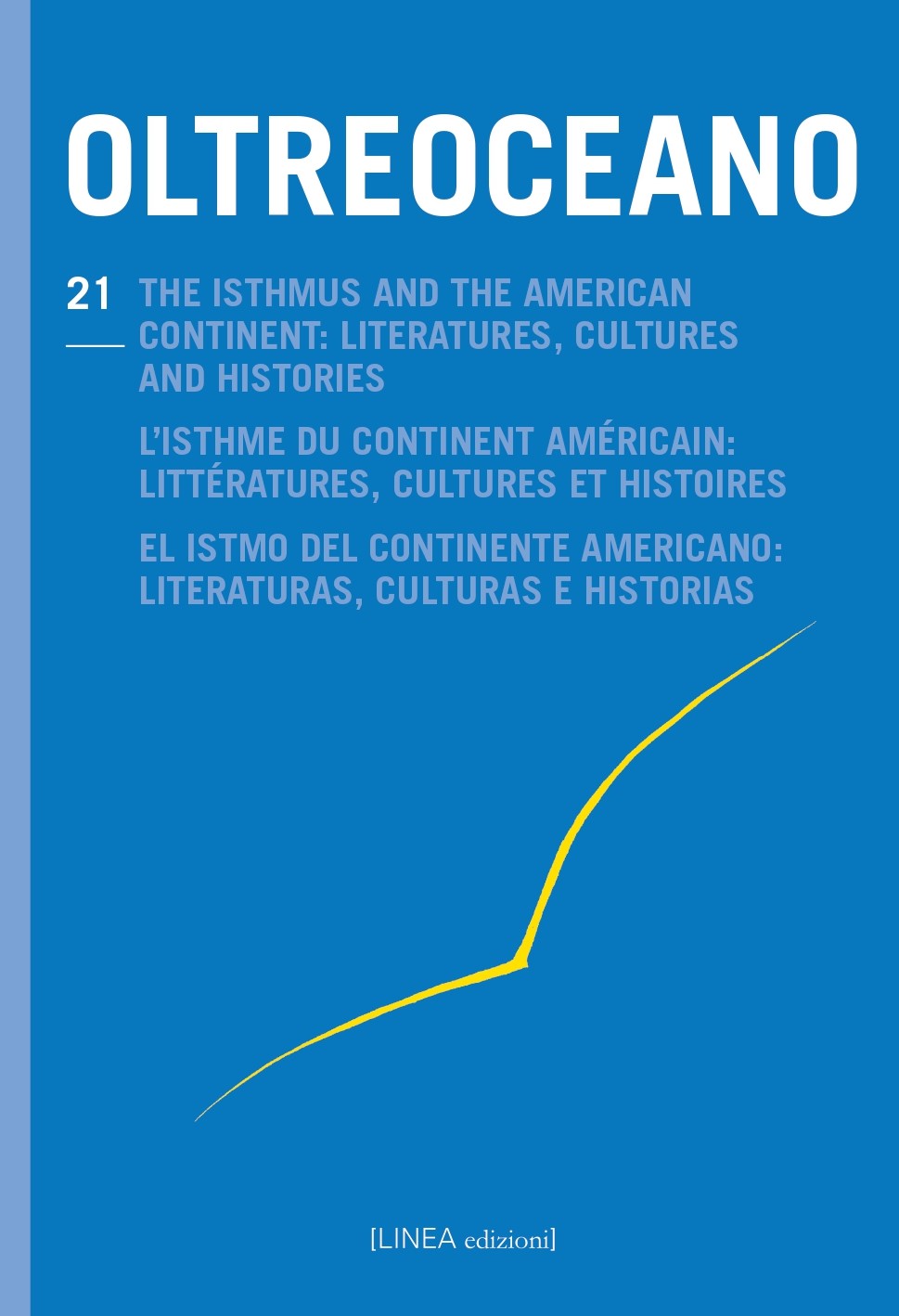“Joining by Division”. A Portrait of Antillean Art in Derek Walcott's Tiepolo's Hound
DOI:
https://doi.org/10.53154/Oltreoceano65Keywords:
Antillean art, migration, Pissarro, WalcottAbstract
Le migrazioni dell’arte e Il Levriero di Tiepolo di Derek Walcott
Un affresco sulla vita e i viaggi intrapresi da celebri pittori per realizzare il loro talento, il poema narrativo, in parte autobiografico, di Derek Walcott, descrive l’imprevedibile natura migratoria dell’arte, che si compie attraverso distanze, separazioni, perdite, interrogandoci sul senso di casa, origini, tradizione.
Seppure incentrato sullo sviluppo artistico di Camille Pissarro e Derek Walcott, il poema è anche un’ampia riflessione sulla natura e le dinamiche della civiltà antillana e della sua espressione artistica. Ne vediamo la prospettiva crescere in versi poetici che indicano il poema-affresco in progress, scaturire e prendere forma dalla memoria sommersa di esili ancestrali, da inizi incerti, e realizzarsi a pieno attraverso un’irradiante apertura alle molteplici e contraddittorie svolte che ne compongono lo spettro culturale, non ultima l’eredità europea.
All’interno di questo continuum creolo, il punto di vista prismatico, il linguaggio iridescente, il poema risponde a una domanda mitica: cosa accade se in un luogo sfigurato da secoli di storia europea, proprio nel momento di svolta in cui la cultura sta per ricostruirsi, il giovane Camille Pissarro non capisce perché dove rimanere, quale opportunità offrano i paesaggi e le scene di vita quotidiana mai dipinti prima, e decide di trapiantare il suo talento in Europa?
Nella loro unicità e grandezza, vita e pittura di Pissarro giganteggiano nel poema a esemplificare una tendenza, un motivo ricorrente nella cultura caraibica, in cui il distacco, la partenza, la perdita, non sono antitetici all’essere radicati, al rimanere, come se il viaggio transcontinentale ricordasse l’origine diasporica di questa civiltà. Il poema rivela la visione antillana di Pissarro ai suoi stessi dipinti (la nativa St. Thomas nei colori di paesaggi francesi, nel vocio dei pioppi tremolanti, la semplicità raggiante), è una spettacolare esibizione di memoria immaginativa, principio motore dell'arte antillana.
Downloads
References
Baugh, E. (2010): “Maps Made in the Heart”: Caribbeans of our Desire. Journal of West Indian Literature, 18, 2, pp. 1-19.
Brathwaite, E. K. (1993): Roots, 1986. Ann Arbor: University of Michigan Press.
Erickson, P. (2005): Artists’ Self-Portraiture and Self-Exploration in Derek Walcott’s Tiepolo’s Hound. Callaloo, 28, 1, pp. 224-235.
Erickson, P. (2009): Invisibility Speaks: Servants and Portraits in Early Modern Visual Culture. Journal for Early Modern Cultural Studies, 9, 1, pp. 23-61.
Farrell, K. (2013): A Dog’s World: the Significance of Canine Companions in Hogarth’s Marriage à la Mode. The British art Journal, 14, 2, pp. 35-38.
Glissant, É. (1997): Poetics of Relation. Translated by Betsy Wing. Ann Arbor: University of Michigan Press.
Glissant, É. (2020): Introduction to a Poetics of Diversity. Translated by Celia Britton. Liverpool: Liverpool University Press.
Murrey, L. (1988): Poemes and the Mystery of Embodiment. Meanjin, 47, 3, pp. 519-533.
Nord, P. (1998): The New Painting and the Dreyfus Affair. Historical Reflections / Réflexions Historiques, 24, 1, pp. 115-136.
Petley, C. (2011): New Perspectives on Slavery and Emancipation in the British Caribbean. The Historical Journal, 54, 3, pp. 855-880.
Sensbach, J. (2022): Impressions of freedom: Camille Pissarro and the post-emancipation Caribbean. Atlantic Studies, 19, 1, pp. 153-175.
Snider, L. (2001): A Lasting Impression: French Painters Revolutionize the Art World. The History Teacher, 35, 1, pp. 89-102.
Walcott, D (1986): Collected Poems: 1948-1984. London: Faber and Faber.
Walcott, D. (2000): Tiepolo’s Hound. New York: Farrar, Straus and Giroux.
Walcott, D. (2009): What the Twilight Says. London: Faber and Faber.
Wynter, S. (1989): Beyond the Word of Man: Glissant and the New Discourse of the Antilles. World Literature Today, 63, 4, pp. 637-648.
Downloads
Published
How to Cite
Issue
Section
License

This work is licensed under a Creative Commons Attribution-NonCommercial-ShareAlike 4.0 International License.
The authors undertake to comply with the following conditions, which are considered accepted at the time of submission of their contributions.
The sending of a text implies that it is unpublished and not submitted to be published elsewhere.
1. If accepted, the author shall confer on the publisher the right to publish and distribute it both in paper form and in the online electronic edition. The published articles will be downloadable and made available in open access.
2. Provided that it correctly indicates that the first publication took place in the journal Oltreoceano. Rivista sulle migrazioni the author has the right to: a) reproduce the article in separate extracts or collected in a volume; b) publish the article on their personal website or teaching site provided that these sites are of a non-commercial nature; c) deposit the article in online archives of a non-commercial nature, linked to the institution they belong to or as part of projects for the non-commercial dissemination and open access of scientific works.
The use of contributions by third parties, for commercial or otherwise unauthorized purposes, is not allowed. The publisher declines all responsibility for the unauthorized use of the material published in the journal.












